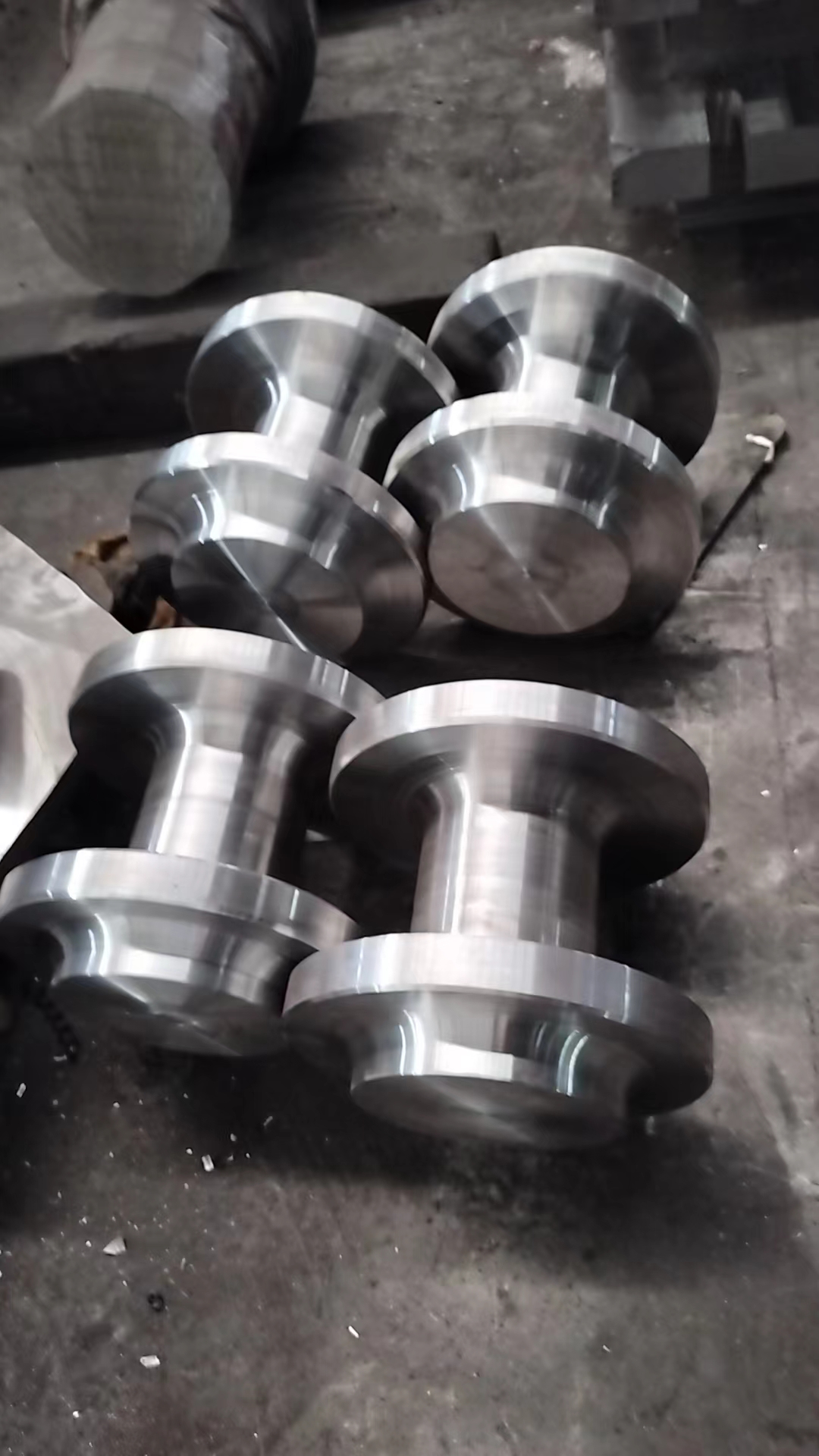The way the forging process moves according to its modal
2024-05-14
The forging is deformed during the cold forging process and is work-hardened, causing the forging die to bear a large load. For this purpose, a high-strength forging die is required, and a hard lubricating film prevents wear and adhesion. In addition, in order to prevent the blank from cracking, intermediate annealing is required to ensure the required deformation ability. In order to maintain good lubrication, the blank can be phosphated. Due to the continuous processing of rods and wire rods, it is currently impossible to lubricate the cross-section, so the possibility of using phosphating lubrication method is being studied.
Forgings can be divided into free forging, cold heading, extrusion, die forging, closed forging, closed forging, etc. according to the movement mode of the casting billet. Both closed forgings and closed upsetting forgings have no flash, and the material utilization rate is high. Complex forgings can be finished in one or several steps. In the absence of flash, the load-bearing area of the forging is reduced and the required load is reduced. However, when the blank cannot be completely defined, the volume of the blank should be strictly controlled and the relative position of the mold should be controlled. At the same time, the forging should be inspected to minimize the wear of the forging die.
The forging process is divided into oscillating rolling, oscillating forging, roll forging, cross wedge rolling, ring rolling, rolling, etc. according to its modal movement mode. Pendulum roller type, pendulum type rotary forgings and rollers can all be precision forged. Rolling and cross-rolling can be used as a front-end process for slender materials to improve material utilization. Using rotary forging processes such as free forging, local forming can also be performed, and it has the ability to achieve forging processing under smaller forging size conditions. This forging method including free forging, during the processing process, the material leaving the die surface is close to the free-form surface. Therefore, it is difficult to ensure its accuracy. Therefore, using computers to control the movement direction of the forging die and the rotary forging process can obtain products with complex shapes and high precision, thus improving its processing capabilities.
When the temperature exceeds 300-400℃ (steel blue embrittlement zone) and 700℃-800℃, the deformation resistance is significantly reduced and the deformation ability is significantly improved. According to different temperature zones, forging quality and forging process requirements, forging can be divided into three forming temperature zones: cold forging, warm forging, and hot forging. It turns out that there is no strict limit to the division of this temperature range. Generally speaking, forging in the recrystallization temperature zone is called hot forging, while forgings that are not heated at room temperature are called cold forging.
During the cold forging process, the size of the forging does not change much. Forging processing at temperatures below 700°C results in less oxide scale formation and no decarburization on the surface. Therefore, as long as the cold forging deformation can reach the energy range, good dimensional accuracy and surface finish can be obtained. If the temperature and lubrication cooling are well controlled, warm forging can be performed at 700°C to obtain higher accuracy. During hot forging, the deformation energy and deformation resistance are small, and large forgings with complex shapes can be forged and processed.




